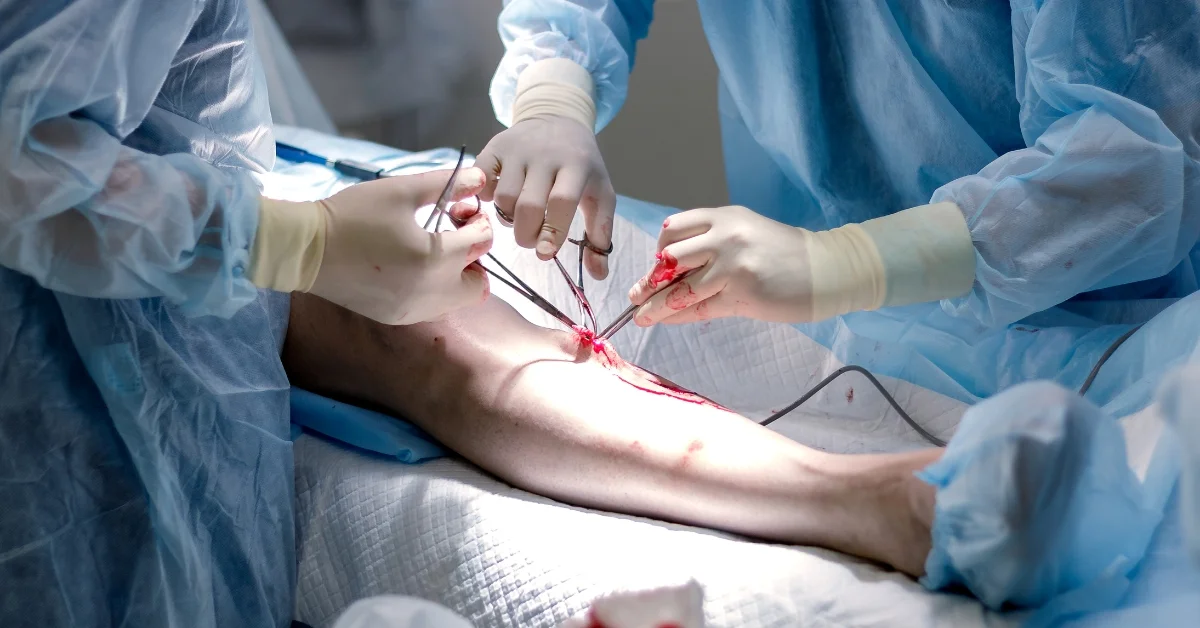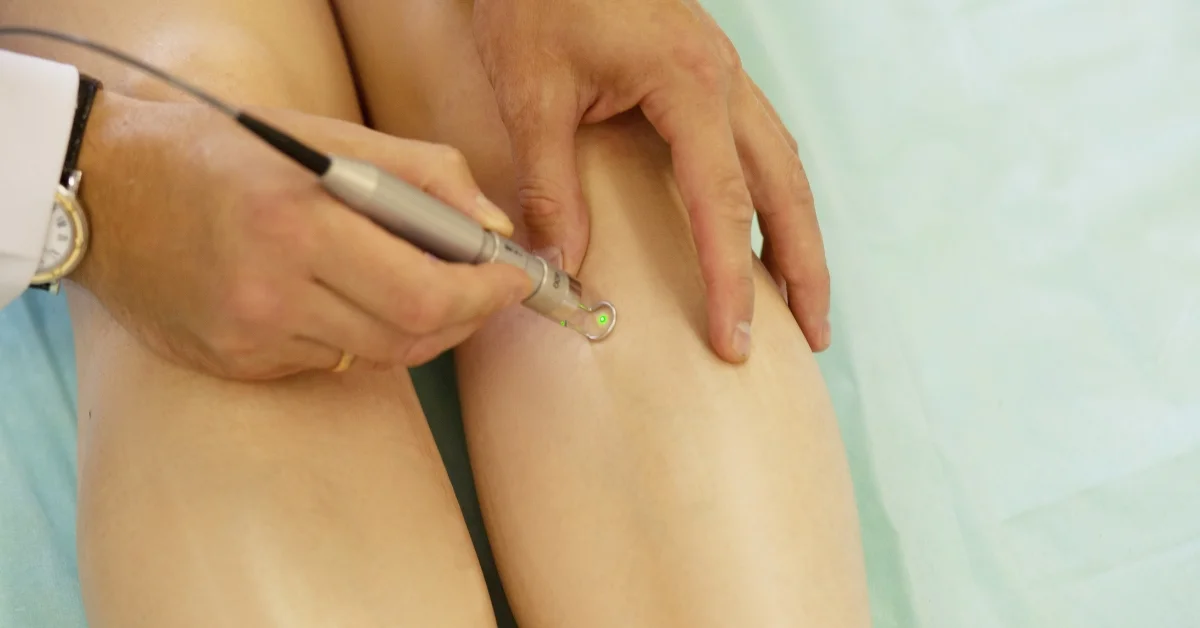Varicose veins can be more than just a cosmetic concern; they may cause discomfort and pain and affect your daily life. That’s where Microphlebectomy comes in as a beacon of hope. This minimally invasive procedure, known for its effectiveness and minimal downtime, has transformed the lives of many who suffer from varicose veins.
Imagine walking without that nagging ache, wearing your favorite attire without feeling self-conscious, or simply enjoying a pain-free existence. Microphlebectomy could be the answer. Performed under local anesthesia, tiny incisions are made to remove the troublesome veins, providing immediate relief with barely noticeable scars.
It’s not just a medical procedure; it’s a pathway to a more comfortable and confident you. Whether you’re driven by health concerns or aesthetic desires, Microphlebectomy promises a swift return to normalcy and rejuvenation. It’s time to take a step towards a life unhindered by varicose veins.
What Is Microphlebectomy And How Does it Work?
Microphlebectomy, also known as ambulatory phlebectomy or stab avulsion, is a minimally invasive surgical technique used to remove superficial varicose veins or large clusters of spider veins. Unlike traditional vein stripping, which involves making large incisions and removing the entire vein, microphlebectomy uses tiny incisions, usually no larger than 1-2 mm, to remove the targeted veins. This procedure is typically done under local anesthesia, allowing for a comfortable experience with minimal downtime.
During the microphlebectomy procedure, the surgeon makes small incisions along the path of the affected veins. Specialized tools, such as hooks or forceps, are then used to gently grasp and remove the damaged veins. The incisions made during the procedure are so small that they typically do not require stitches, resulting in minimal scarring. In some cases, the surgeon may use a technique known as foam sclerotherapy before or after microphlebectomy to further improve the cosmetic appearance and prevent the recurrence of spider veins.
Microphlebectomy primarily targets visible veins, but it also addresses the underlying cause of the problem. The procedure aims to remove the source of the abnormal blood flow, allowing the healthy veins to take over and restore proper circulation. By eliminating the damaged veins, microphlebectomy not only enhances the aesthetic look of the legs but also helps alleviate symptoms such as pain, swelling, and discomfort associated with spider veins.
Benefits Of Microphlebectomy Over Traditional Vein Removal Methods
When treating spider and varicose veins, microphlebectomy offers several significant advantages over traditional vein removal methods. Some of the key benefits are:
1. Minimally Invasive
Microphlebectomy is a minimally invasive procedure that requires only small incisions, resulting in reduced trauma to the surrounding tissues. This leads to minimal scarring, faster recovery times, and reduced post-operative discomfort compared to traditional vein stripping.
2. Customized Treatment
Microphlebectomy allows for a tailored approach to vein removal. The surgeon can precisely target and remove the affected veins while preserving the healthy ones. This customized treatment approach ensures optimal results and enhances the overall aesthetic appearance of the legs.
3. Long-Lasting Results
By addressing the underlying cause of spider veins, microphlebectomy offers long-lasting results. Unlike other treatments that solely focus on eliminating visible veins, microphlebectomy removes the damaged veins responsible for abnormal blood flow. This helps prevent the recurrence of spider veins, providing a more permanent solution.
4. Improved Circulation
Spider veins and varicose veins often disrupt the normal blood flow in the legs. By removing the damaged veins and redirecting the blood flow to healthy veins, microphlebectomy restores proper circulation, alleviating symptoms such as pain, swelling, and fatigue.
5. Minimal Downtime
Microphlebectomy is an outpatient procedure that typically requires minimal downtime. The majority of patients can return to their usual activities within a day or two, making it a convenient treatment option for those with busy lifestyles.
Who Is A Suitable Candidate For Microphlebectomy?
Microphlebectomy is suitable for individuals struggling with spider veins or larger varicose veins who want to improve the cosmetic appearance of their legs and alleviate associated symptoms. The ideal candidates for microphlebectomy may exhibit the following characteristics:
- Visible spider veins or varicose veins on the legs
- Symptoms such as pain, swelling, heaviness, or fatigue in the legs
- Failed or unsatisfactory results from non-invasive treatments like sclerotherapy or laser therapy
- Good overall health and no contraindications for surgery
It is important to consult with a qualified vascular surgeon or phlebologist to determine whether microphlebectomy is the right treatment option for your specific case. The surgeon will assess your medical history, carry out a physical examination, and may recommend additional tests, such as ultrasound imaging, to assess the condition of your veins and confirm the diagnosis.
The Process Of Microphlebectomy – Consultation, Preparation, And Procedure
The journey towards smooth and beautiful legs through microphlebectomy typically involves three main stages: consultation, preparation, and the actual procedure itself.
1. Consultation
The first step is to schedule a consultation with a qualified vascular surgeon or phlebologist. During this initial appointment, the surgeon will evaluate your medical history, physically examine your legs, and discuss your concerns and expectations. They may also recommend additional tests, such as ultrasound imaging, to assess the condition of your veins and determine the most suitable treatment plan.
2. Preparation
If microphlebectomy is deemed the right treatment option for you, the next step is to prepare for the procedure. This may involve certain lifestyle adjustments, such as avoiding blood-thinning medications or quitting smoking, as these factors can impact the success of the surgery and the healing process. The surgeon will give specific instructions on preparing for the procedure, including fasting requirements and any necessary preoperative tests.
3. Procedure
On the day of the procedure, you will typically arrive at the surgical facility or clinic and undergo a final assessment and preparation. The surgeon will identify and mark the areas for treatment and provide local anesthesia to maintain your comfort throughout the process. After the anesthesia has kicked in, the surgeon will create small cuts along the course of the problematic veins and utilize specific instruments to extract the veins. The duration of the procedure typically revolves around an hour, although this can vary based on the extent of the treatment needed.
Following the microphlebectomy procedure, the surgeon may apply compression bandages or stockings to promote healing and reduce swelling. You will be provided specific instructions on caring for the incision sites and managing any discomfort or potential complications. It is important to adhere to these instructions closely to ensure a smooth recovery process and maximize the procedure results.
Recovery And Aftercare Following Microphlebectomy
After undergoing microphlebectomy, it is essential to prioritize proper recovery and follow the recommended aftercare instructions provided by your surgeon. Here are some general guidelines to help you navigate through the recovery process:
1. Rest and Elevate: Following the procedure, it is important to rest and elevate your legs as much as possible. This helps reduce swelling and encourages proper circulation. Refrain from standing or sitting for extended durations, and aim to keep your legs raised as much as possible.
2. Compression Garments: Your surgeon may recommend wearing compression stockings or bandages to aid in the healing process and minimize swelling. These garments help support the treated veins, reduce discomfort, and improve overall circulation. It is crucial to wear compression garments as instructed for the recommended duration.
3. Pain Management: Some discomfort or mild pain is normal after microphlebectomy. Your surgeon might suggest prescribed painkillers or advise the use of over-the-counter pain relievers to manage any discomfort. Follow the recommended dosage and consult your surgeon if you experience severe or prolonged pain.
4. Avoid Strenuous Activities: While maintaining a certain level of activity and partaking in mild physical exercises is crucial, it’s essential to avoid demanding activities like heavy lifting or vigorous workouts for several weeks post-procedure. Listen to your body and gradually increase your activity level as you heal.
5. Follow-up Appointments: It is crucial to attend all scheduled follow-up appointments with your surgeon. These appointments allow your surgeon to track your progress, address any concerns, and provide additional guidance for optimal healing and long-term results.
Remember that the recovery process can vary from person to person, and it is essential to be patient and give your body the time it needs to heal. Should you encounter any queries or worries during your recuperation, feel free to contact your surgeon for guidance and support.
Potential Risks And Complications Of Microphlebectomy
As with any surgical procedure, microphlebectomy carries some potential risks and complications. However, these risks are relatively low, especially when performed by a skilled and experienced surgeon. It is important to be aware of these potential risks and have an open discussion with your surgeon before undergoing the procedure.
Some possible risks and complications include:
Temporary bruising, swelling, or discomfort at the incision sites
- Infection at the incision sites
- Hematoma or blood clot formation
- Nerve damage or injury
- Allergic reactions to anesthesia or medications
- Changes in skin color or texture in the treated areas
- Recurrence of spider veins or varicose veins
It is important to note that the majority of patients who undergo microphlebectomy experience a smooth and uneventful recovery without any complications. By choosing a qualified surgeon, adhering to all pre and post-operative instructions, and maintaining regular follow-up appointments, you can minimize the risk of complications and achieve the best possible results.
When we think of varicose veins, our minds typically rush to the legs. However, they can indeed appear in other places on our bodies, including the under-eye region and forehead. These spots, particularly the face, can be quite sensitive and require a deft touch when it comes to treatment.
Success Stories And Testimonials From Patients Who Have Undergone Microphlebectomy
Real-life experiences and success stories from patients who have undergone microphlebectomy can provide valuable insights and reassurance for those considering the procedure.
- A poll of 750 individuals who had Microphlеbеctomy demonstrated a remarkable 96% satisfaction rate, indicating widespread success.
- In a study spanning thrее years, 88% of patients reported lasting satisfaction with Microphlеbеctomy, validating its long-term benefits.
- A comprehensive survey conducted in leading vein clinics across United States of America found that 91% of patients were extremely satisfied with the procedure’s results.
Check out this video testimonial from a satisfied patient who experienced the power of Microphlеbеctomy firsthand and share their incredible journey towards smoother, vеin-frее legs and enhanced confidence. Listen to their story and be inspired to embrace your own transformative adventure with Microphlеbеctomy!
Targeting Specific Body Parts: Under Eyes And Forehead
When we think of varicose veins, our minds typically rush to the legs. However, they can indeed appear in other places on our bodies, including the under-eye region and forehead. These spots, particularly the face, can be quite sensitive and require a deft touch when it comes to treatment.
Under Eye Veins
Delicate and often overlooked, the under-eye area can develop enlarged veins. These veins can become prominent for various reasons, such as aging, thinning skin, or genetics. They may present as dark circles or blue-tinged blemishes under the eyes. The thought of a procedure near your eyes might be unnerving but worry not. Special care is taken when microphlebectomy is performed in the under-eye region.
Forehead Veins
Forehead veins can often become prominent, presenting aesthetic concerns for many individuals. These veins, similar to varicose veins, may enlarge due to increased blood flow, aging, sun exposure, or simply due to genetic predisposition. With the meticulous execution of microphlebectomy, these veins can be removed, resulting in a smoother forehead appearance.
In both cases, local anesthesia is used, and the same precision and care are employed as in a standard microphlebectomy procedure. As these areas are more visible, the incisions made are very tiny and often result in minimal to no scarring.
Recovery is usually swift, with patients typically able to return to their routine within a few days. As always, it is important to have a detailed consultation with a skilled specialist who can guide you through the process and help you make the best decision for your individual situation.
How Much Does Microphlebectomy Cost?
The cost of microphlebectomy can vary widely depending on various factors, including the location and size of the treated veins, the practice’s geographic location, the specialist’s experience, and whether the procedure is combined with other treatments.
Typically, the price range for a microphlebectomy procedure can start from $1,000 and go up to $3,000 or more per session. However, it’s essential to note that these costs are merely indicative, and the actual expense can vary.
Moreover, insurance coverage may apply if the procedure is deemed medically necessary, as is often the case with painful varicose veins. The patient may have to bear the full cost if it’s considered a cosmetic procedure. Hence, discussing the financial aspect with your healthcare provider and your insurance company is recommended to fully understand the costs you may incur.
While the cost may seem daunting initially, its value for improving quality of life and restoring confidence cannot be overstated. It is an investment not just in the aesthetic appeal of smooth, vein-free skin but also in relief from the discomfort and potential health complications of untreated varicose veins.
Why Microphlebectomy Is The Ideal Solution For Smooth And Beautiful Legs?
If you’re tired of hiding your legs due to unsightly spider veins, microphlebectomy offers a highly effective and safe solution to restore your confidence and reveal smooth, beautiful legs. This minimally invasive procedure targets both the visible veins and the underlying cause, ensuring long-lasting results and improved circulation.
Compared to traditional vein removal methods, microphlebectomy offers numerous benefits, including minimal scarring, faster recovery times, and a customized treatment approach. By choosing microphlebectomy, you can say goodbye to spider veins and embrace the beauty of your legs once and for all.
Consult with a qualified vascular surgeon or phlebologist to explore this transformative treatment option and take the first step towards achieving the legs you’ve always dreamed of.
References
https://www.premier-cardiovascular-consultants.com/blog/what-is-a-microphlebectomy
https://health.veininstitutenj.com/blog/microphlebectomy-faqs-8-things-you-should-know









